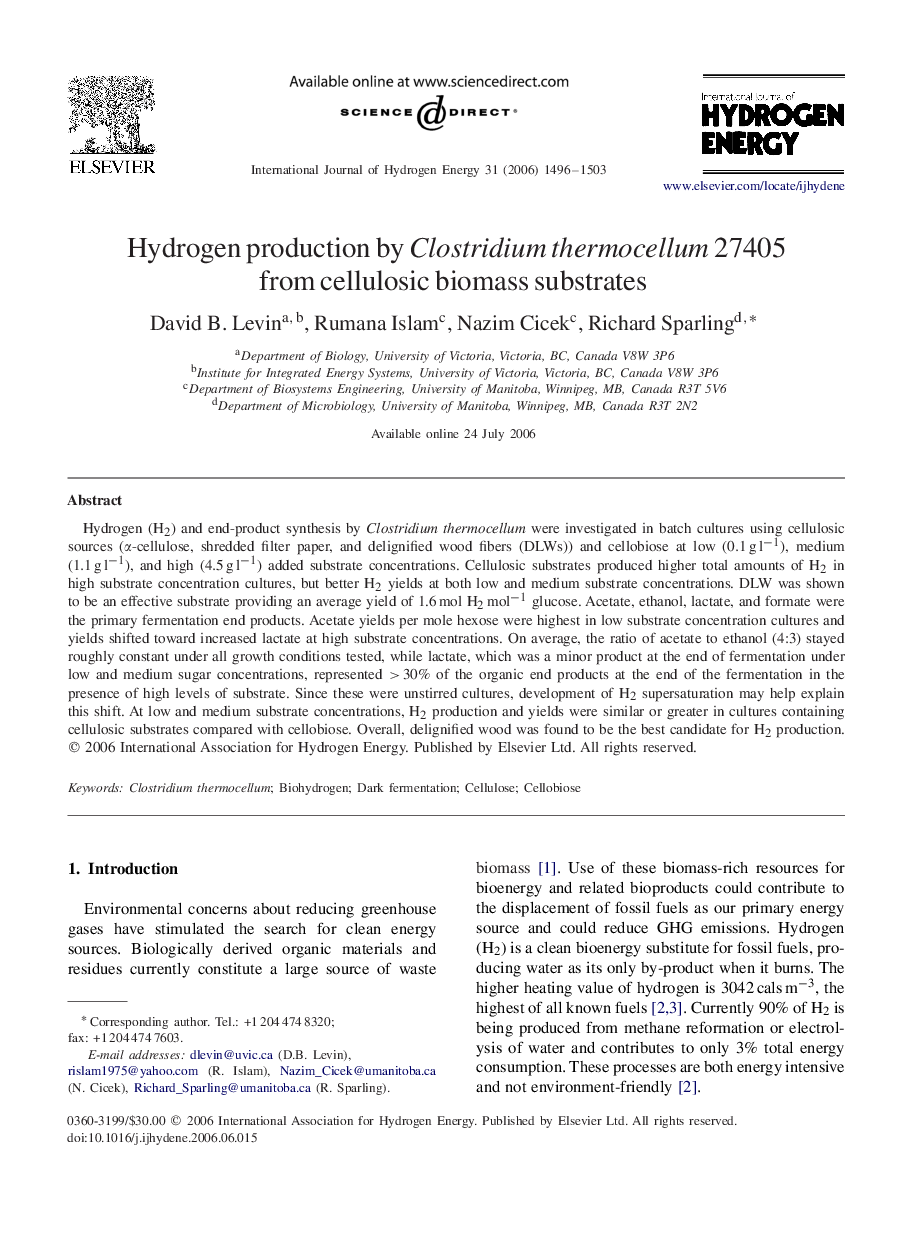| Article ID | Journal | Published Year | Pages | File Type |
|---|---|---|---|---|
| 1281998 | International Journal of Hydrogen Energy | 2006 | 8 Pages |
Hydrogen (H2) and end-product synthesis by Clostridium thermocellum were investigated in batch cultures using cellulosic sources (αα-cellulose, shredded filter paper, and delignified wood fibers (DLWs)) and cellobiose at low (0.1gl-1), medium (1.1gl-1), and high (4.5gl-1) added substrate concentrations. Cellulosic substrates produced higher total amounts of H2 in high substrate concentration cultures, but better H2 yields at both low and medium substrate concentrations. DLW was shown to be an effective substrate providing an average yield of 1.6 mol H2mol-1 glucose. Acetate, ethanol, lactate, and formate were the primary fermentation end products. Acetate yields per mole hexose were highest in low substrate concentration cultures and yields shifted toward increased lactate at high substrate concentrations. On average, the ratio of acetate to ethanol (4:3) stayed roughly constant under all growth conditions tested, while lactate, which was a minor product at the end of fermentation under low and medium sugar concentrations, represented >30%>30% of the organic end products at the end of the fermentation in the presence of high levels of substrate. Since these were unstirred cultures, development of H2 supersaturation may help explain this shift. At low and medium substrate concentrations, H2 production and yields were similar or greater in cultures containing cellulosic substrates compared with cellobiose. Overall, delignified wood was found to be the best candidate for H2 production.
